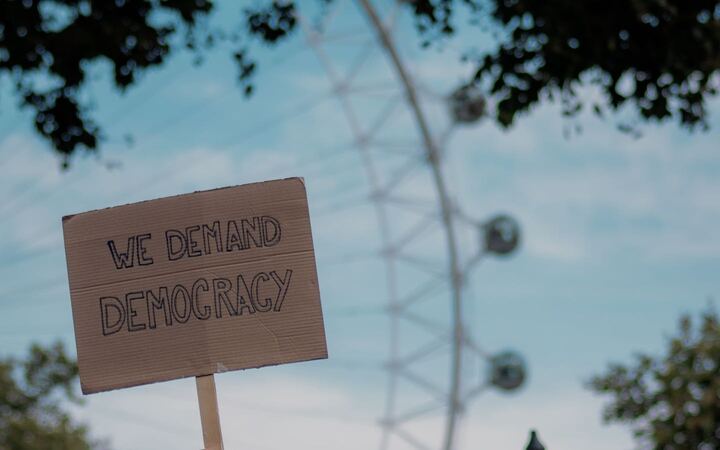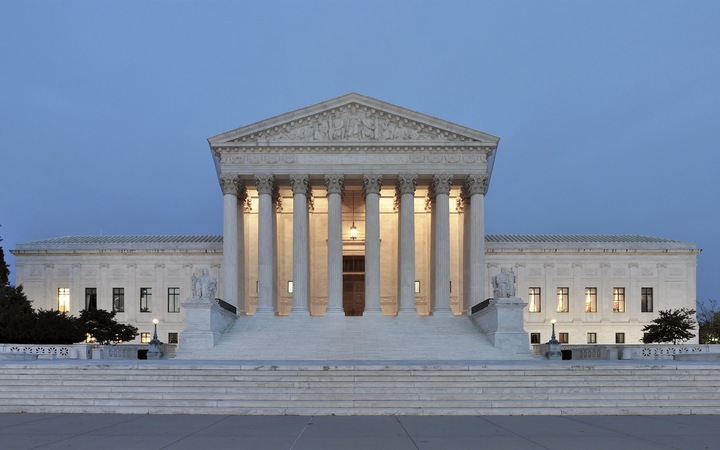If you ever joined a large organization in the US, you filled out an ethnicity form. Here’s a typical one:
VOLUNTARY SELF IDENTIFICATION FORM
Please check one of the following:
☐ American Indian or Alaska Native
☐ Asian
☐ Black or African American
☐ Hispanic or Latino
☐ Native Hawaiian or Other Pacific Islander
☐ White
☐ Two or More RacesThe employer is subject to certain governmental recordkeeping and reporting requirements for the administration of civil rights laws and regulations. In order to comply with these laws, the employer invites employees to voluntarily self-identify their race or ethnicity. Submission of this information is voluntary and refusal to provide it will not subject you to any adverse treatment. The information obtained will be kept confidential and may only be used in accordance with the provisions of applicable laws, executive orders, and regulations, including those that require the information to be summarized and reported to the federal government for civil rights enforcement. When reported, data will not identify any specific individual.
One thing’s clear: This is voluntary. But some places add something like this:
If you choose not to self-identify, your gender and ethnicity will be recorded by a representative based on visual observation.
Rather changes the vibe, no? What’s going on here?
The Civil Right Act was passed in 1964 and amended by the Equal Employment Opportunity Act in 1973. Title VI of this created the US Equal Employment Opportunity Commission (EEOC) and gave them the power to issue regulations. The current regulations are found in Title 29, Volume 4, Chapter XIV, Part 1602 of the federal code of regulations. These state:
- Before Sep. 30 each employer with more than 100 employees must file an EEO-1 form.
- It’s illegal for the employers to make false statements, and this is a serious crime.
- Employers can get the information required on the form by “visual surveys” or by maintaining records.
So what’s on the EEO-1 form?
- Employers must classify each person by sex, job category, and race/ethnicity.
- The options for sex are: male or female.
- The options for job category are: executives, mid-level manager, professional, technician, sales worker, administrative support, craft worker, operative, laborer, or service worker.
- The options for race/ethnicity are: Hispanic/Latino, White, Black, Pacific Islanders, Asian, American Indian or Two or more races.
- The employer should list the number of people in each sex + job category + race/ethnicity bucket and report the total number.
Finally, the instruction booklet states:
Employers are required to attempt to allow employees to use self-identification to complete the EEO-1 report
As an aside: The EEO is at pains to emphasize that hispanic/latino is not an ethnicity, while also behaving exactly as if it were. Technically, each person has an ethnicity (hispanic or not) and then race (white, etc.) is only reported for non-hispanics.
Previously, there was some guidance about non-binary people, but this is now gone.
Some places do explain what happens if you don’t disclose. If you get a job at the FDIC, their form says:
In the instance of missing information, your employing agency will attempt to identify your race and ethnicity by visual observation.
Clear language, at the top of the form. Good for you, FDIC!
How many places explain this? To get a rough estimate, I searched for “EEO disclosure form” and filtered for forms that seem to actually be used. I then checked if they explain what happens if you refuse to fill out the form.
Why do so many places not explain this? They have nothing to be ashamed of, and everywhere does it.
Well, remember text at the start of the post? That’s the EEOC’s suggested language. Most places use it nearly unchanged.
Why is the EEOC’s suggested language so misleading? I don’t know.
So, where are we?
-
You’re asked about your ethnicity because organizations must report it to the government. It’s not optional, the categories are fixed, and there’s no “unknown” option.
-
Many places emphasize that you have the right not to answer. That’s true but misleading since if you don’t answer they have to guess.
-
They probably don’t intent to mislead– they’re just using the the EEOC’s suggested language. Why is the EEOC’s language is unclear, we don’t know.
-
Unlike your hollow right to not answer, you right to lie about your ethnicity is absolute. All of these regulations apply to employers, not to employees.
-
This odd constellation of rights is eerily plausible as a woke platform now, half a century later after they were created. This was surely not foreseeable at the time.
-
There’s a bunch of related rules that no one knows exist. That might be good– this is all awkward enough already.













